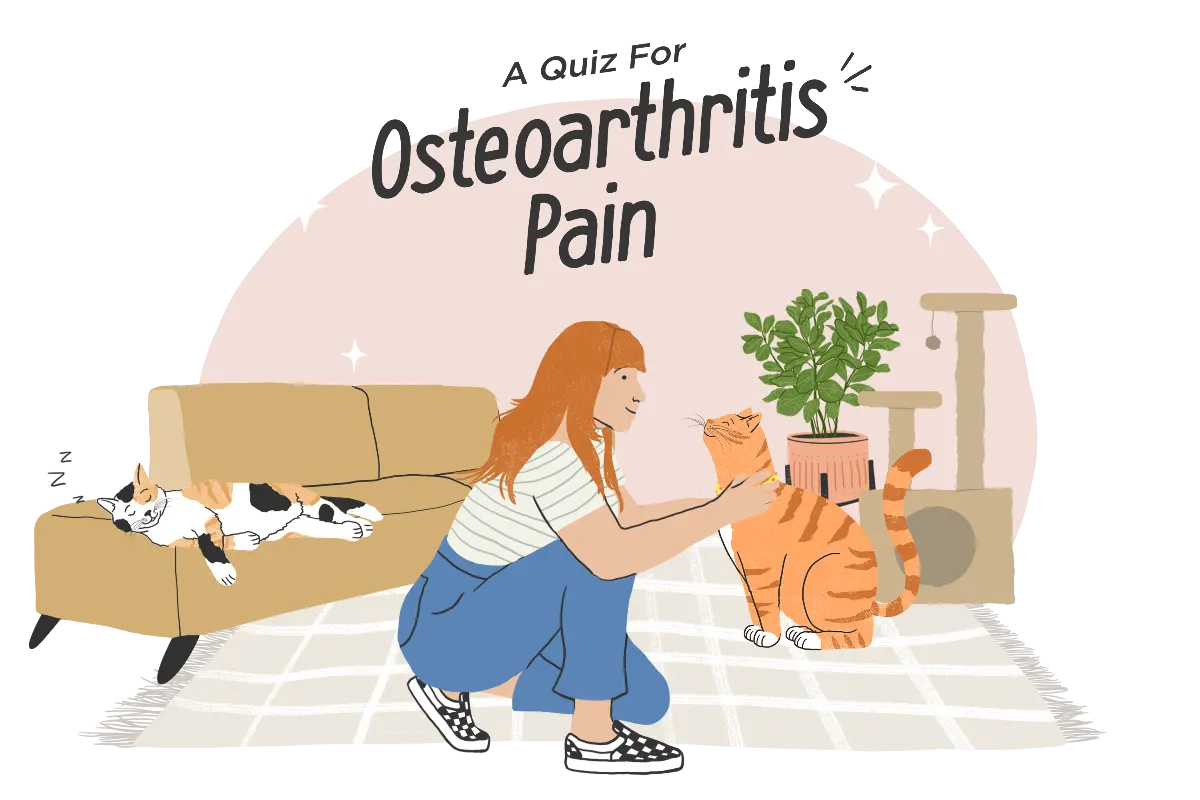

Could Your Cat Be Showing Signs of Osteoarthritis?
Tell us a little about your cat and their behaviors to see if they’re showing signs of osteoarthritis. We’ll send you the results in a personalized report that you can share with your vet.
This quiz is not a medical diagnostic tool and is not intended to replace discussions with an animal healthcare professional. Discuss medical concerns with your veterinarian.
IMPORTANT SAFETY INFORMATION: For use in cats only. Women who are pregnant, trying to conceive or breastfeeding should take extreme care to avoid self-injection. Allergic reactions, including anaphylaxis, could potentially occur with self-injection. SOLENSIA should not be used in breeding cats or in pregnant or lactating queens. SOLENSIA should not be administered to cats with a known allergy to frunevetmab. The most common adverse events reported in a clinical study were vomiting and injection site pain. Solensia may be associated with scabbing of the head and neck, dermatitis, and pruritus. See full Prescribing Information.
INDICATION: For the control of pain associated with osteoarthritis in cats.
References
- Based on the Musculoskeletal Pain Screening Checklist (MiPSC) © 2019 North Carolina State University.
- Slingerland LI, Hazewinkel HAW, Meij BP, Picavet P, Voorhout G. Cross-sectional study of the prevalence and clinical features of osteoarthritis in 100 cats. The Veterinary Journal. 2011;187(3):304-309. doi:10.1016/j.tvjl.2009.12.014.
- Gruen ME, Myers JAE, Lascelles BDX. Efficacy and safety of an anti-nerve growth factor antibody (frunevetmab) for the treatment of degenerative joint disease-associated chronic pain in cats: a multisite pilot field study. Front Vet Sci. 2021;8:610028. doi:10.3389/fvets.2021.610028.
- Keizer RJ, Huitema AD, Schellens JH, Beijnen JH. Clinical pharmacokinetics of therapeutic monoclonal antibodies. Clin Pharmacokinet. 2010;49(8):493-507. doi:10.2165/11531280.

Sign-Up for Vet-Approved Health Tips, Giveaways, and More
By signing up you agree to our Terms of Use
The product information provided in this site is intended only for residents of the United States. The products discussed herein may not have marketing authorization or may have different product labeling in different countries. The animal health information contained herein is provided for educational purposes only and is not intended to replace discussions with an animal healthcare professional. All decisions regarding the care of a veterinary patient must be made with an animal healthcare professional, considering the unique characteristics of the patient.
All trademarks are the property of Zoetis Services LLC or a related company or a licensor unless otherwise noted. ©2025 Zoetis Services LLC. All rights reserved. ZPC-01562R2